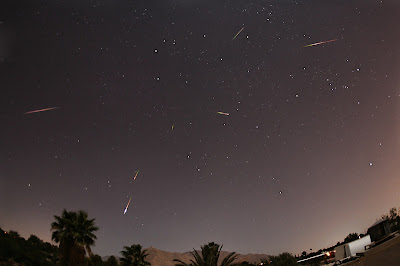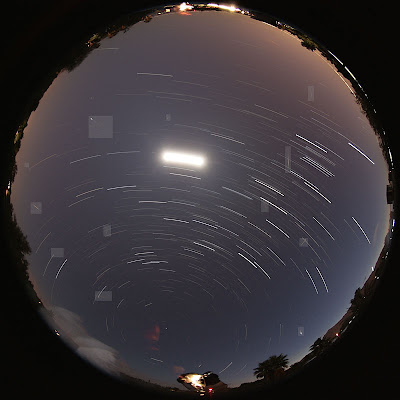This morning the sky fell again - this time pieces of comet Kiess (C/1911 N1) from it's last passage into the solar system in ~ 83 AD. The comet is a long period interloper from the Oort cloud and as such may be delivering debris that is pristine from the birth of the solar system. The peak was due at around 4:36am local time but visual observation suggest that this peak occurred earlier then expected (~4:25 am).
I observed the shower from the roof of my house in suburban Tucson AZ. From 3:30 am to 5:00 am I observed 42 meteors. Corrected for things such as my ability only to monitor half the sky, moonlight and light pollution, altitude of the radiant, etc - I estimate the ZHR at ~95. Not bad for a rare event like this. Most of the meteors observed were very bright (> 2.0 mag) and made for a brilliant show.

While I was visually observing the shower I photographed the event from 4:05am to 5:00am using two tripod mounted DSLRs equipped with a 15mm and 8mm fisheye lenses respectively. Exposures were 5 seconds at F/2.8 and ISO 1600 for the 15mm and 7 seconds at F/3.5 and ISO 1600 for the 8mm. Above and below are composites of the eight brightest meteors captured during the hour long photographic effort.

Below are the full composites of the two images above. The 15mm full composite is the sum of 519 separate images and shows 19 individual Aurigid meteors. The 8mm full composite contains 422 separate images and shows 17 individual meteors. Meteor trails were highlighted for easier identification in the full resolution version of the composite.






















